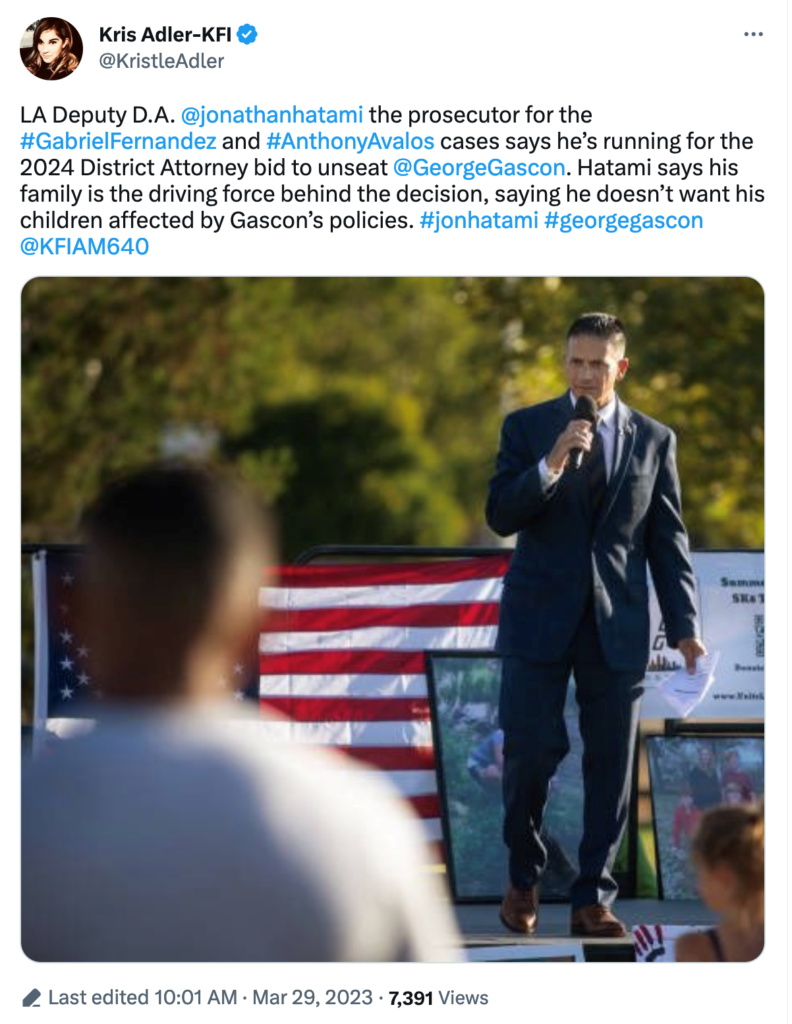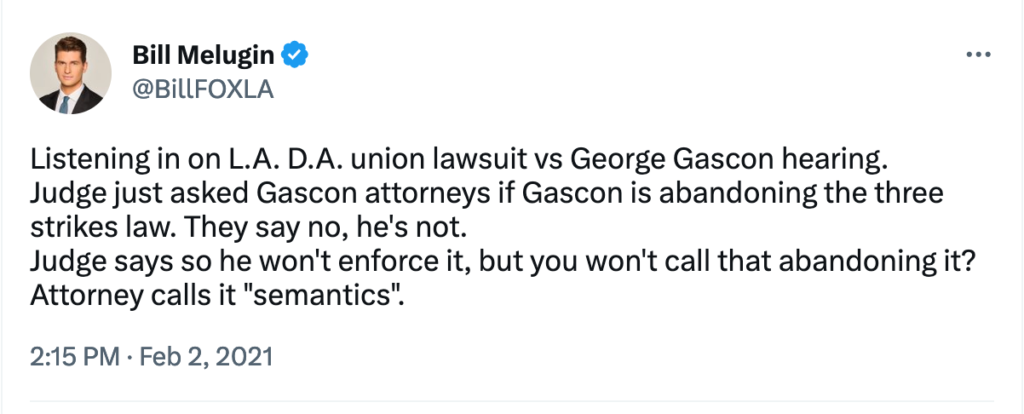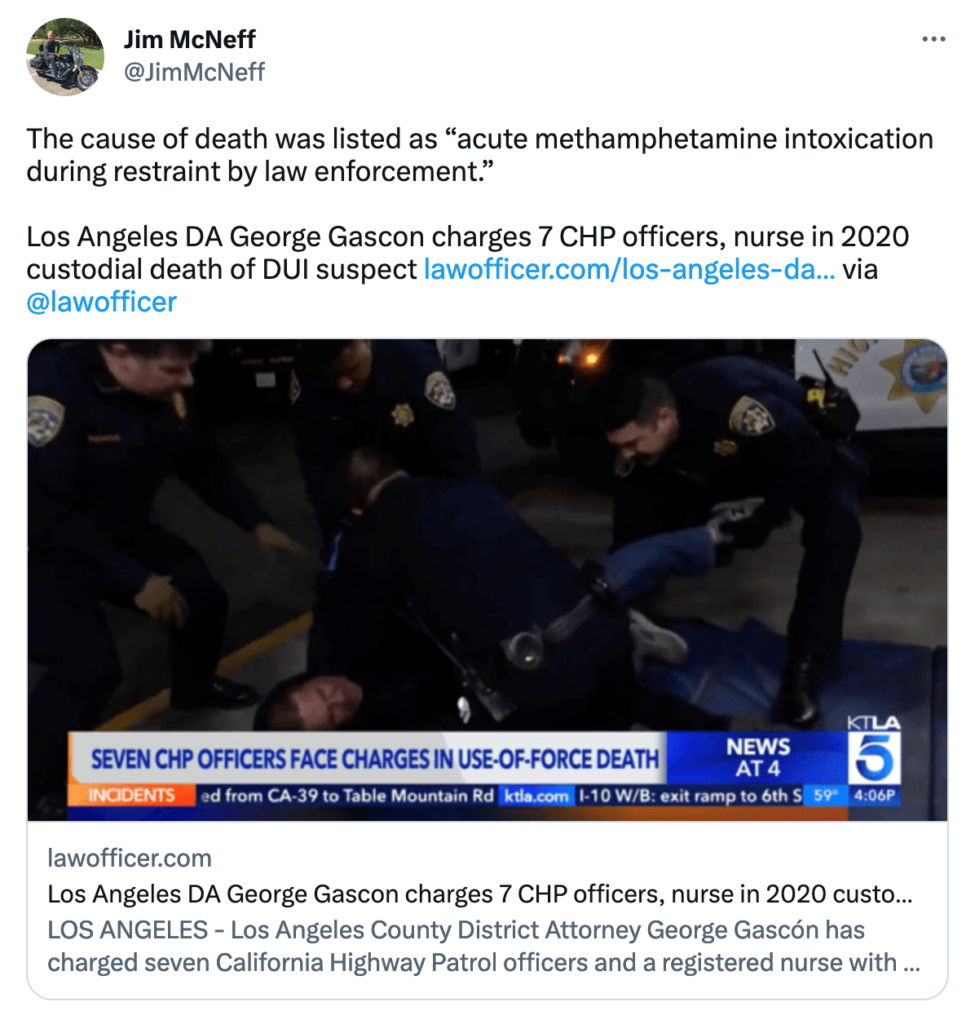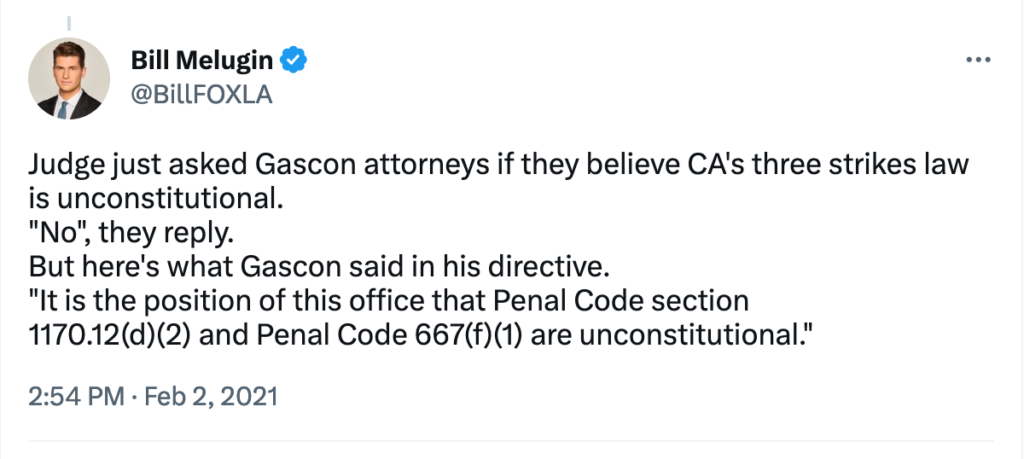[ad_1]
Share and speak up for justice, law & order…
By Steve Pomper
Well, it didn’t take long for that—what a buddy of mine on the job used to call— “air thief,” LA County DA George Gascón, to blip on my radar screen again. Recently, NPA reported on the toxic, Soros-funded district attorney losing a $1.5 million retaliation lawsuit to one of his assistant DAs.
More than a dozen of Gascón’s assistant DAs have filed similar lawsuits against him. They essentially involve accusations of retaliation against his staff for complaining about his not allowing them to enforce the law. Worse, they’ve filed complaints for his policies that force them to “break the law.”

The LA Times reported, via MSN, Gascón replaced his chief of staff after she told him, “a number of policies he enacted on his first day in office were illegal, including procedures involving cash bail, the prosecution of juveniles and the use of sentencing enhancements. Only one of Gascón’s policies has been deemed illegal by a judge…”
He also reportedly refused to enforce California’s three-strikes law.

This guy is so immersed in radical leftist ideology, according to National Review, he recently “suspended a prosecutor for allegedly referring to a convicted child molester and a suspected murderer by his birth name and the pronouns that correspond to his sex, rather than the name and pronouns he adopted after coming out as transgender.”
Now, Gascón is at it again. He’s charged seven California Highway Patrol (CHP) cops and one nurse with involuntary manslaughter despite the LA County coroner citing the suspect’s cause of death was “acute methamphetamine intoxication during restraint by law enforcement.”

While Gascón routinely declines to charge or prosecute truly violent criminals and shows no regard for crime victims, he’s repeatedly shown no such reluctance to charge and prosecute cops.
Three years ago, CHP pulled over Edward Bronstein, 38, on Interstate-5 for suspected DUI. The officer had reportedly observed him driving erratically.
WKYT (KCAL/KCBS) reported, “Officers arrested Bronstein, brought him into the CHP station in Altadena, and got a court order to draw his blood for the DUI investigation.”
While researching this article, the coverage of the video of the incident I came across showed only the police restraining the suspect and Bronstein’s “screams ‘I can’t breathe’ over and over….” Coverage of what led up to police having to restrain him was much harder to find.
I’d never thought much about the “I can’t breathe complaint,” having heard it so many times over my career, until a firefighter told me, “if they’re yelling, ‘I can’t breathe,’ they can breathe.” He explained people who can’t breathe can’t scream or yell.

It’s more likely suspects are panicking, have difficulty breathing, or are faking the complaint to distract officers into lessening their physical control. Perhaps, an attempt to escape.
My partner and I once subdued and restrained a robbery suspect in the middle of the street. All around us were large apartment buildings with some residents peering down at us. The suspect was relatively compliant before we handcuffed him. Once handcuffed, he screamed like a Banshee, things like, “Stop hurting me, get off me, and I didn’t do anything.” Others must have thought we were torturing him.
We chuckled because we were barely touching him. Why did he do it? Because it works—with non-cops, anyway. Fake pain and “I can’t breathe” are weapons many crooks, most of whom don’t die, use to distract officers. Hard for cops to tell the difference. For them it’s just another uncooperative suspect who must be brought under control.
Similarly, when people see several cops, as in this video, restraining a resisting suspect, it’s often chaotic and can appear abusive to the uninformed. However, while people may criticize the cop, saying things like, how many officers does it take for just one guy? Having more officers rather than fewer often makes it easier to control the suspect without injury to the suspect or cops.
The officers cannot, at that moment, account for how that particular human being reacts to the toxic substances he’s ingested. How could they know what he’s taken unless the suspect tells them? They can only react to the suspect’s behavior.
In this case, the suspect’s behavior controlled the police contact from the beginning. The suspect attracted police attention when he allegedly drove under the influence of intoxicants. The cops treated the suspect without using force while he was cooperative. It was only when he became uncooperative that police used force to gain compliance.
As with so many of these cases, even without a use-of-force, the suspect may have died later in his jail cell or in a hospital because that acute intoxication wasn’t going away quickly. Bronstein’s resistance caused the officers to use force, which might have unavoidably exacerbated the suspect’s self-inflicted condition.
Also, what was the officers’ alternative once they’d obtained a warrant from a judge to draw blood? Cops can’t enforce court orders and warrants against only compliant suspects. The fact that Bronstein died after poisoning himself with a drug and alcohol cocktail and then resisted officers cannot be blamed on the cops’ or the nurse.
Gascón knows that. He just doesn’t care. He saw an opportunity to target cops, and he took it—after three years. That’s what political narcinihilists like LA’s disgraceful district attorney do (And you know this must be getting to me, if I’m going off and inventing words).
This article originally appeared at the National Police Association.
Share and speak up for justice, law & order…
Continue Reading
[ad_2]




